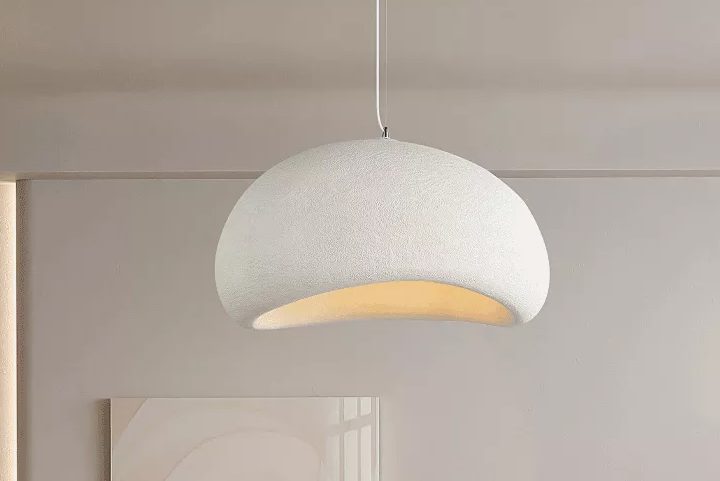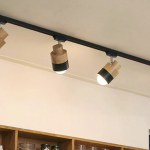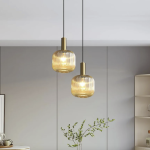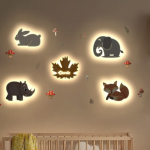
Pendant lighting has emerged as a favored choice in contemporary interior design, offering a blend of functionality and aesthetic appeal. One of the primary benefits of pendant lights is their versatility. They can be used in various settings, from kitchens and dining areas to living rooms and entryways.
This adaptability allows homeowners to create a cohesive design theme throughout their spaces. For instance, a cluster of pendant lights can serve as a striking focal point above a kitchen island, while a single, elegantly designed pendant can enhance the ambiance of a cozy reading nook. The ability to choose from an array of styles, materials, and colors means that pendant lights can complement any decor, whether it be modern, rustic, or eclectic.
Another significant advantage of pendant lighting is its capacity to provide targeted illumination. Unlike general overhead lighting, which can create harsh shadows and uneven light distribution, pendant lights can be strategically placed to highlight specific areas or features within a room. For example, hanging a pendant light directly above a dining table not only illuminates the space for meals but also creates an inviting atmosphere for gatherings.
Additionally, many pendant lights come with adjustable heights, allowing homeowners to customize the light’s position according to their needs. This feature is particularly beneficial in spaces with varying ceiling heights, ensuring that the light is both functional and visually appealing.
Choosing the Right Pendant Light for Your Space
Selecting the appropriate pendant light involves considering several factors, including the size of the space, the height of the ceiling, and the overall design aesthetic. A common mistake is choosing a pendant that is either too large or too small for the intended area. For instance, in a spacious dining room with high ceilings, a large, statement-making pendant can create a dramatic effect and serve as a conversation starter.
Conversely, in a smaller kitchen or nook, opting for a more compact pendant can prevent the space from feeling overcrowded while still providing adequate lighting. The style of the pendant light should also align with the existing decor. For example, if a home features a modern design with clean lines and minimalistic furniture, a sleek metal pendant with geometric shapes would enhance the overall look.
On the other hand, a vintage-inspired glass pendant might be more suitable for a home with traditional furnishings. Additionally, consider the color palette of the room; selecting a pendant that incorporates complementary colors can tie the space together harmoniously. It’s also essential to think about the type of bulb used in the pendant light, as this will affect both the quality of light and energy efficiency.
How to Install Pendant Lights
Installing pendant lights can be a straightforward process if approached methodically. Before beginning, it’s crucial to gather all necessary tools and materials, including a ladder, wire cutters, electrical tape, and a voltage tester. Safety should always be the top priority; ensure that the power is turned off at the circuit breaker before starting any electrical work.
Once safety measures are in place, measure and mark the desired height for the pendant light. A general guideline is to hang pendants 30 to 36 inches above surfaces like dining tables or kitchen islands to provide optimal illumination without obstructing views. After marking the height, it’s time to install the mounting bracket that comes with the pendant light fixture.
This bracket will secure the light to the ceiling and should be attached to a ceiling joist for stability. If there isn’t a joist where you want to install the light, consider using toggle bolts or anchors designed for ceiling installations. Once the bracket is securely in place, connect the electrical wires from the ceiling to those of the pendant light according to color coding—typically black (or red) for hot wires and white for neutral wires.
After securing all connections with wire nuts and electrical tape, carefully tuck the wires into the junction box and attach the pendant fixture to the mounting bracket. Finally, restore power at the circuit breaker and test the light to ensure it functions correctly.
Creative Ways to Use Pendant Lights in Different Rooms
Pendant lights are not limited to traditional applications; they can be creatively utilized in various rooms throughout the home. In kitchens, for example, they can be hung in clusters over an island or breakfast bar to create an inviting atmosphere for casual dining or entertaining guests. This arrangement not only provides ample task lighting but also adds visual interest through varying heights and styles of pendants.
Additionally, using different types of pendants—such as glass globes mixed with metal fixtures—can create an eclectic yet cohesive look. In living rooms, pendant lights can serve as an alternative to traditional floor or table lamps. A well-placed pendant can illuminate seating areas while adding an artistic element to the decor.
For instance, hanging a large drum-shaped pendant above a coffee table can create an intimate setting for conversation or relaxation. Furthermore, in bedrooms, pendant lights Acorohome can replace bedside lamps for a more streamlined appearance. By mounting pendants on either side of the bed at an appropriate height, homeowners can free up valuable nightstand space while still achieving functional lighting.
Maintenance and Cleaning Tips for Pendant Lights
Maintaining pendant lights is essential for preserving their beauty and functionality over time. Regular cleaning helps prevent dust buildup and ensures that light fixtures continue to emit bright illumination. The cleaning process will vary depending on the material of the pendant; glass pendants may require different care than metal or fabric ones.
For glass fixtures, using a soft microfiber cloth dampened with warm soapy water is often sufficient. Avoid abrasive cleaners that could scratch or damage delicate surfaces. For metal pendants, it’s important to use appropriate cleaning solutions based on the finish—brass may require polishing while matte finishes might need only a gentle wipe-down with a damp cloth.
Additionally, it’s wise to periodically check for loose connections or signs of wear in electrical components. If any issues are detected—such as flickering lights or unusual sounds—consulting an electrician is advisable to ensure safety and proper function.
Trends in Pendant Light Designs
The world of pendant lighting is constantly evolving, with new trends emerging that reflect changing tastes and technological advancements. One notable trend is the use of sustainable materials in pendant designs. Eco-friendly options such as reclaimed wood or recycled metals are becoming increasingly popular among environmentally conscious consumers who wish to reduce their carbon footprint while enhancing their home decor.
Another trend gaining traction is the incorporation of smart technology into pendant lighting. Many modern fixtures now come equipped with features such as dimmable LED bulbs and compatibility with smart home systems like Google Home or Amazon Alexa. This allows homeowners to control their lighting remotely or set schedules for when lights should turn on or off.
Additionally, unique shapes and artistic designs are making waves in interior design; sculptural pendants that resemble works of art are being used as statement pieces in various settings. These trends not only reflect current design preferences but also highlight an ongoing commitment to innovation within the realm of lighting design.




